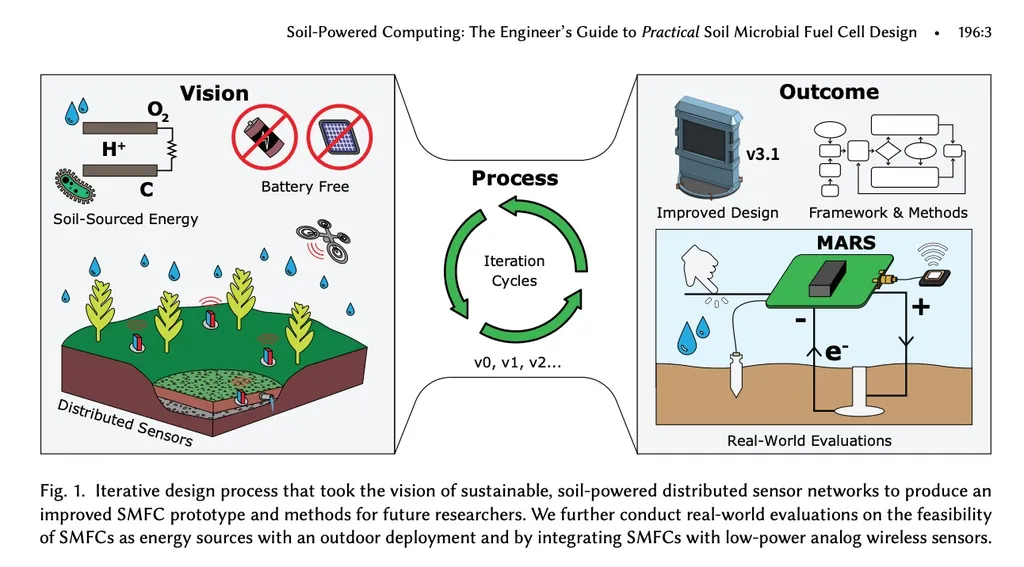In a world where the Internet of Things (IoT) is becoming as ubiquitous as the air we breathe, powering these devices sustainably is a growing challenge. Enter soil microbial fuel cells (SMFCs), a green energy solution that’s catching the attention of researchers and industries alike. A recent study, published in the journal ‘DeCarbon’ (translated from Chinese), delves into the nitty-gritty of SMFC design, offering insights that could revolutionize the way we power IoT devices, including those in the maritime sector.
At the helm of this research is Yaozi Zheng from the Thrust of Internet of Things at The Hong Kong University of Science and Technology (Guangzhou). Zheng and his team have been busy evaluating the critical design parameters that influence the performance of SMFCs, with a particular focus on electrode material selection and spatial configurations. They tested six common metallic materials, and the winner, in terms of voltage and current outputs, was the zinc-stainless steel combo.
But it’s not just about the materials. The team also found that the spatial arrangement of the electrodes plays a significant role. Series connection mode, for instance, provides higher voltage output but also larger internal resistance. On the other hand, parallel mode results in higher power output and lower internal resistance. It’s a balancing act, and understanding these dynamics is key to optimizing SMFC performance.
To showcase the practical potential of SMFCs, the team powered a customized low-power IoT node using a nine-cell series array. The result? Successful transmission of temperature data to the cloud, all without a traditional battery. As Zheng puts it, “This work highlights the viability of SMFCs as a renewable, battery-free solution for IoT devices.”
So, what does this mean for the maritime sector? Well, imagine a fleet of ships or offshore platforms equipped with IoT devices powered by SMFCs. These devices could monitor everything from water quality and weather conditions to structural integrity and equipment performance, all while minimizing environmental impact. The potential for cost savings and improved efficiency is enormous.
Moreover, SMFCs could be a game-changer for remote or hard-to-reach areas where traditional power sources are not feasible. As Zheng explains, “Potential applications include agriculture, environmental monitoring, and smart campuses, but the maritime sector is also a promising frontier.”
The commercial impacts are equally exciting. As the demand for sustainable and cost-effective power resources grows, so does the market for SMFCs. Companies that invest in this technology early could find themselves at the forefront of a green energy revolution.
In conclusion, Zheng’s research is a significant step towards a carbon-zero IoT, and the maritime sector is poised to reap the benefits. As we strive for a more sustainable future, SMFCs offer a glimmer of hope, a beacon of innovation in the vast sea of green energy solutions.

